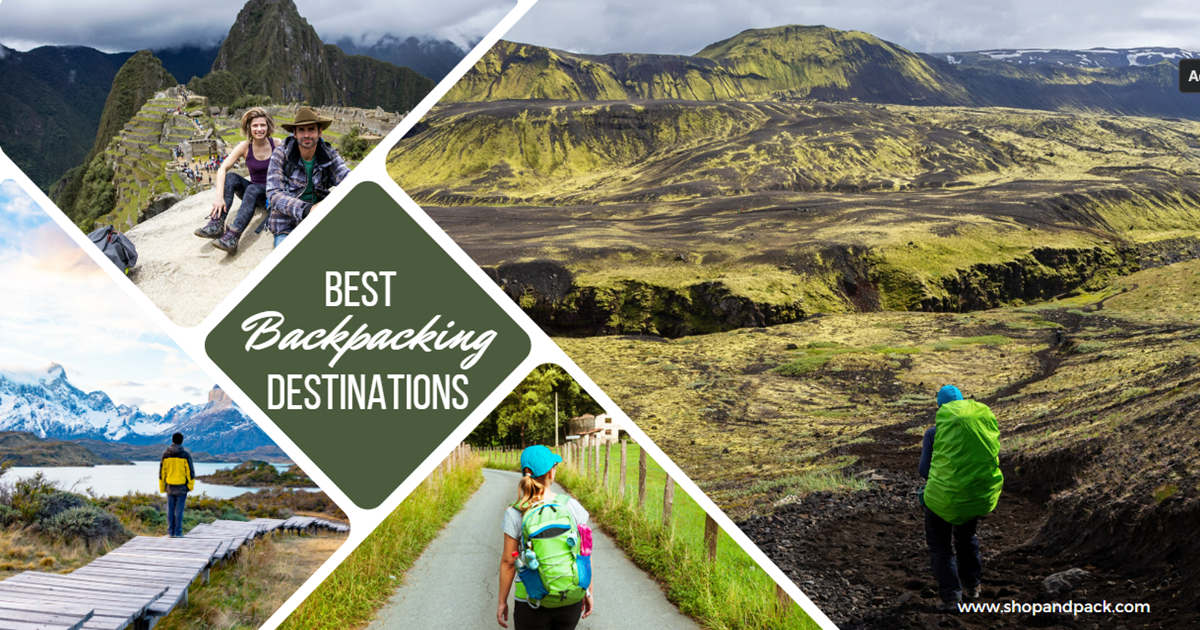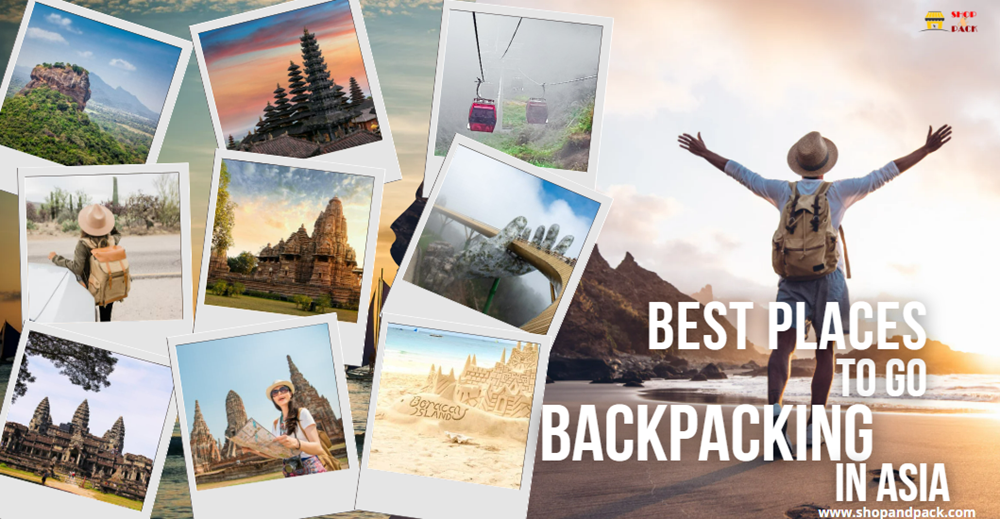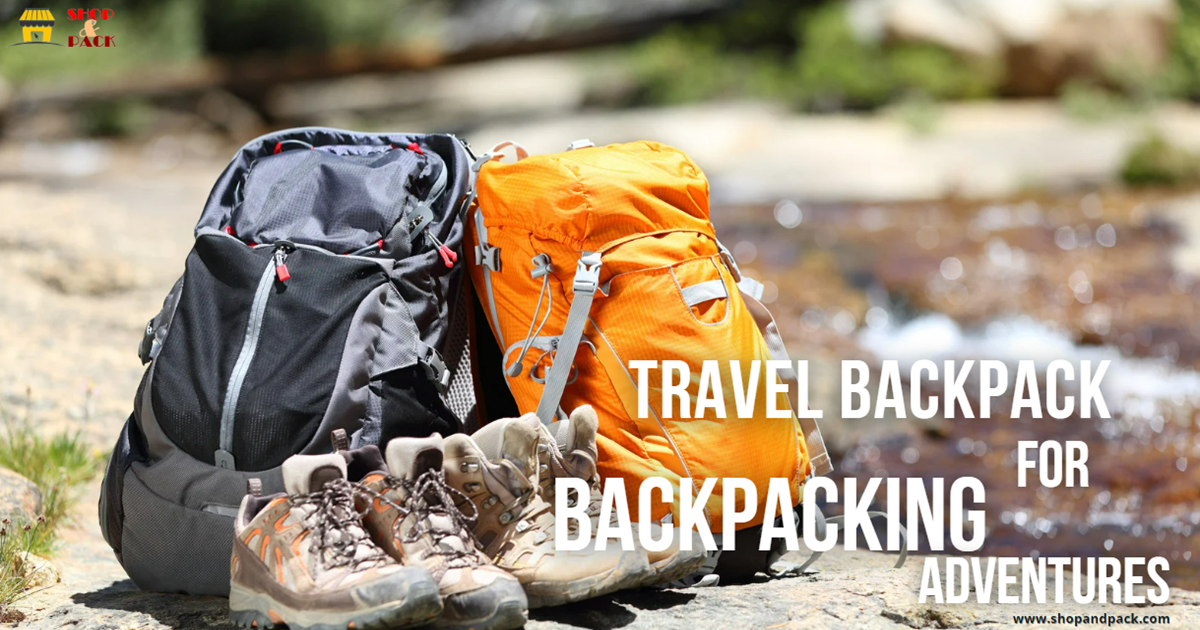Are you ready to pack your bags, lace up your hiking boots, and hit the trails for an unforgettable summer adventure? Backpacking offers a unique way to explore the world, allowing you to immerse yourself in nature, discover remote landscapes, and connect with fellow adventurers along the way. In this article, we’ll explore the 10 best backpacking destinations around the globe that promise breathtaking scenery, thrilling adventures, and memories to last a lifetime. So, grab your gear and get ready to discover your next epic adventure!
Best Backpacking Destinations This Summer
1. Machu Picchu, Peru
Machu Picchu stands as a testament to the ingenuity of the Inca civilization, perched majestically amidst the mist-shrouded peaks of the Andes Mountains. Visiting this ancient citadel is like stepping back in time, as you wander through terraced fields, intricate stone structures, and mysterious temples. The sense of wonder and awe that washes over you as you gaze upon Machu Picchu is truly unparalleled, making it a must-visit destination for history enthusiasts and adventure seekers alike.
- Hike the Legendary Inca Trail: Embark on a multi-day trek along the renowned Inca Trail, following in the footsteps of ancient pilgrims and traversing breathtaking mountain passes. Along the way, you’ll encounter ancient ruins, lush cloud forests, and stunning vistas, culminating in a sunrise arrival at the Sun Gate overlooking Machu Picchu.
- Marvel at Panoramic Views from the Sun Gate: As the first rays of dawn illuminate the rugged landscape, catch your first glimpse of Machu Picchu from the iconic Sun Gate (Inti Punku). The panoramic views of the citadel nestled amidst the surrounding peaks are nothing short of breathtaking, providing a perfect photo opportunity and a moment of pure awe.
- Explore the Mystical Ruins: Once inside Machu Picchu, immerse yourself in its enigmatic atmosphere as you wander among intricately carved stone buildings, ceremonial plazas, and hidden passageways. Don’t miss highlights like the Temple of the Sun, the Intihuatana Stone, and the terraced agricultural sector, each offering insights into the ancient Inca way of life.
Tips:
- Plan Your Trek During the Dry Season: To make the most of your Machu Picchu experience, plan your trek during the dry season, which typically runs from May to September. During this time, you’ll encounter milder weather conditions, with clear skies and minimal rainfall, making for a more comfortable and enjoyable journey. Additionally, the dry season tends to see fewer crowds, allowing you to fully appreciate the tranquility and majesty of Machu Picchu without the hustle and bustle of peak tourist season.
- Book Permits and Accommodations in Advance: Due to its popularity, permits for the Inca Trail can sell out months in advance, especially during peak season. Be sure to book your permits and accommodations well ahead of time to secure your spot on the trail and avoid disappointment. Additionally, consider hiring a reputable tour operator who can handle logistics such as permits, gear, and transportation, allowing you to focus on the adventure ahead.
2. Torres del Paine National Park, Chile
Torres del Paine National Park beckons adventurers with its untamed wilderness, captivating landscapes, and awe-inspiring natural wonders. Nestled in the heart of Patagonia, this iconic park offers a true escape into the wild, where rugged mountains, pristine lakes, and ancient forests converge to create a landscape of unparalleled beauty. Whether you’re an avid hiker, wildlife enthusiast, or simply seeking solace in nature, Torres del Paine promises an unforgettable journey into the heart of Patagonia’s wilderness.
- Trek the Famous W Circuit: Embark on the legendary W Circuit, a world-renowned trek that winds its way through some of Torres del Paine’s most spectacular scenery. The W Circuit takes you on a multi-day journey past towering granite peaks, sparkling glacial lakes, and sweeping valleys, with highlights including the iconic Torres del Paine towers, the breathtaking French Valley, and the serene shores of Lake Grey.
- Witness Towering Glaciers and Turquoise Lakes: Torres del Paine is home to an array of natural wonders, including colossal glaciers and crystal-clear lakes that shimmer like jewels amidst the rugged landscape. Marvel at the sheer size and beauty of glaciers such as Grey Glacier, which feeds into the milky-blue waters of Lake Grey, or take a boat excursion to witness the stunning blue hues of the hidden Lake Pehoé nestled beneath the towering peaks.
- Explore Dramatic Granite Peaks: The rugged terrain of Torres del Paine is dominated by towering granite peaks that rise dramatically from the surrounding plains, creating a dramatic backdrop for your adventures. Whether you’re hiking along the base of the iconic Cuernos del Paine or summiting the jagged peaks of the Torres themselves, you’ll be treated to unparalleled views of the park’s stunning landscapes and ever-changing skies.
Tips:
- Be Prepared for Unpredictable Weather: Patagonia’s weather is notoriously unpredictable, with conditions ranging from sunshine to rain, wind, and even snow within a matter of hours. Be sure to pack appropriate clothing layers, including waterproof and windproof outer layers, to stay comfortable in changing weather conditions. Additionally, always check the weather forecast before setting out on your trek, and be prepared to adjust your plans accordingly.
- Make Reservations in Advance: Accommodations in Torres del Paine, including campsites and refugios (mountain huts), can fill up quickly during the peak season (December to February). To ensure you have a place to stay along the W Circuit, it’s advisable to make reservations well in advance. Many campsites and refugios also offer meals and amenities such as hot showers, so be sure to plan accordingly and book any necessary services ahead of time to avoid disappointment.
3. The Appalachian Trail, United States
An epic journey awaits you on the legendary Appalachian Trail, a long-distance hiking route that stretches over 2,000 miles from Springer Mountain in Georgia to Mount Katahdin in Maine. Spanning through 14 states along the eastern United States, the Appalachian Trail offers a unique opportunity to immerse yourself in the natural beauty and cultural heritage of the American wilderness. Whether you’re seeking a thru-hike spanning several months or a day hike to reconnect with nature, the Appalachian Trail promises unforgettable experiences and breathtaking vistas at every turn.
- Encounter Diverse Ecosystems: As you traverse the Appalachian Trail, you’ll encounter a rich tapestry of ecosystems, from lush forests and rolling meadows to rugged mountains and pristine lakes. Each segment of the trail offers its own unique landscapes and wildlife, providing endless opportunities for exploration and discovery. Keep your eyes peeled for native flora and fauna, including wildflowers, songbirds, deer, and black bears, as you journey through this diverse wilderness.
- Explore Charming Trail Towns: Along the route of the Appalachian Trail, you’ll have the opportunity to rest and recharge in charming trail towns that offer warm hospitality and a glimpse into local culture. From rustic mountain hamlets to bustling river towns, these communities welcome hikers with open arms, providing amenities such as lodging, restaurants, and resupply options. Take a break from the trail to indulge in a hot meal, stock up on supplies, or simply mingle with fellow hikers and locals who share your love of the outdoors.
- Marvel at Breathtaking Vistas: One of the highlights of hiking the Appalachian Trail is the opportunity to witness breathtaking vistas that showcase the natural beauty of the eastern United States. From the rocky outcrops of the southern Appalachian Mountains to the rugged peaks of New Hampshire’s White Mountains, each vista offers a panoramic glimpse into the majesty of the wilderness. Whether you’re admiring a sunrise from a mountain summit or gazing out over a tranquil valley, these scenic viewpoints serve as reminders of the awe-inspiring power of nature.
Tips:
- Plan According to Skill Level and Season: The Appalachian Trail offers a range of hiking opportunities suitable for hikers of all skill levels, from day hikes to thru-hikes lasting several months. Before embarking on your journey, assess your fitness level and hiking experience to determine the most appropriate section of the trail for your abilities. Additionally, consider the season and weather conditions when planning your hike, as trail conditions can vary significantly throughout the year. Spring and fall are popular times to hike the trail, offering mild temperatures and vibrant foliage, while summer can bring hot and humid weather, especially in the southern states.
- Obtain Necessary Permits and Bear Precautions: Depending on the section of the trail you plan to hike, you may need to obtain permits for camping or backcountry use. Be sure to research and secure any necessary permits well in advance of your hike to ensure compliance with local regulations. Additionally, bear safety is a crucial consideration when hiking the Appalachian Trail, particularly in areas with active bear populations. Familiarize yourself with bear safety protocols, including proper food storage and disposal, and carry bear-resistant containers or bear-proof bags to protect your food and belongings.
4. The Dolomites, Italy
The Dolomites beckon adventurers with their unparalleled beauty, captivating landscapes, and rich cultural heritage. Recognized as a UNESCO World Heritage Site, this mountain range in northern Italy is renowned for its dramatic limestone peaks, alpine meadows, and picturesque villages nestled amidst towering cliffs. Whether you’re an avid hiker, a nature enthusiast, or simply seeking tranquility in the mountains, the Dolomites offer a truly unforgettable experience that will leave you spellbound.
- Trek Iconic Trails like the Alta Via 1: Lace up your hiking boots and embark on an unforgettable journey along the Alta Via 1, one of the most iconic trekking routes in the Dolomites. Stretching over 120 kilometers from Dobbiaco to Belluno, this high-altitude trail traverses rugged mountain passes, alpine meadows, and breathtaking panoramic viewpoints. Along the way, you’ll encounter charming rifugios (mountain huts) where you can rest, refuel, and savor delicious Italian cuisine amidst stunning mountain scenery.
- Explore Picturesque Valleys: Immerse yourself in the natural beauty of the Dolomites as you explore picturesque valleys dotted with pristine lakes, cascading waterfalls, and lush forests. From the verdant pastures of Val Gardena to the tranquil beauty of Val di Fassa, each valley offers its own unique charm and opportunities for outdoor adventure. Don’t miss iconic landmarks like the Tre Cime di Lavaredo, a trio of distinctive peaks that dominate the landscape and provide a stunning backdrop for your explorations.
- Savor Authentic Italian Cuisine in Mountain Rifugios: After a day of hiking in the Dolomites, indulge in the culinary delights of the region by dining in traditional mountain rifugios. These cozy alpine huts offer a warm welcome to weary hikers, serving up hearty Italian dishes made from locally sourced ingredients. Treat yourself to a steaming bowl of polenta topped with wild mushrooms, enjoy a slice of freshly baked strudel with a dollop of whipped cream, or sip on a glass of crisp local wine as you soak in the panoramic views of the surrounding mountains.
Tips:
- Visit in the Summer Months for Ideal Hiking Conditions: The summer months (June to September) offer the best hiking conditions in the Dolomites, with mild temperatures, long daylight hours, and minimal precipitation. This is also the perfect time to witness the breathtaking wildflower displays that carpet the alpine meadows in a riot of color, creating a stunning contrast against the rugged mountain backdrop. Be sure to pack layers to accommodate changing weather conditions, and consider booking accommodations in advance, especially in popular hiking areas.
- Plan Your Route and Accommodations in Advance: With so many hiking trails and accommodation options to choose from, it’s important to plan your itinerary and book accommodations well in advance, especially during the busy summer months. Whether you prefer to stay in mountain rifugios, cozy guesthouses, or luxury hotels, there are options to suit every budget and preference. Additionally, consider hiring a local guide who can provide expert insight into the best trails, hidden gems, and cultural attractions of the Dolomites.
5. Annapurna Circuit, Nepal
For an unforgettable adventure, visit Annapurna Massif. A Himalayan giant that has captivated trekkers and mountaineers for decades. The Annapurna Circuit offers a mesmerizing journey through diverse landscapes, ancient villages, and breathtaking mountain scenery, making it one of the world’s most iconic trekking destinations. Whether you’re drawn to the challenge of high mountain passes or the rich cultural heritage of the region, the Annapurna Circuit promises an epic journey that will leave you awestruck.
- Trek Through Diverse Landscapes: The Annapurna Circuit takes you on a journey through a kaleidoscope of landscapes, from lush subtropical forests and terraced rice fields to arid alpine deserts and towering snow-capped peaks. As you traverse this diverse terrain, you’ll encounter a rich tapestry of flora and fauna, including rhododendron forests, cascading waterfalls, and elusive wildlife such as the elusive snow leopard. Each day brings new wonders and challenges, as you ascend to high mountain passes and descend into deep river valleys, experiencing the full spectrum of Nepal’s natural beauty.
- Witness Panoramic Views of Himalayan Giants: One of the highlights of the Annapurna Circuit is the opportunity to witness panoramic views of some of the world’s highest peaks, including Annapurna I, Manaslu, Dhaulagiri, and Machhapuchhre (Fishtail). Whether you’re standing atop Thorong La Pass, the highest point on the circuit at 5,416 meters (17,769 feet), or gazing out over the serene waters of Tilicho Lake, you’ll be treated to breathtaking vistas that showcase the awe-inspiring grandeur of the Himalayas.
- Immerse Yourself in Local Culture: Along the Annapurna Circuit, you’ll have the opportunity to immerse yourself in the rich cultural heritage of the region, as you visit traditional Nepali villages, Buddhist monasteries, and sacred pilgrimage sites. Take time to interact with local villagers, learn about their customs and traditions, and sample delicious Nepali cuisine, such as dal bhat (rice and lentils), momos (dumplings), and thukpa (noodle soup). Hiring a local guide can provide valuable insights into the local culture and ensure a safe and enriching experience.
Tips:
- Acclimatize Properly: Proper acclimatization is essential when trekking at high altitudes to prevent altitude sickness and ensure a safe and enjoyable journey. Take your time to ascend gradually, allowing your body to adjust to the thin air and decreased oxygen levels. Stay hydrated, listen to your body, and be prepared to descend if you experience symptoms of altitude sickness, such as headache, nausea, or dizziness.
- Pack for Variable Weather: The weather in the Annapurna region can be unpredictable, with conditions ranging from hot and sunny to cold and snowy depending on the season and altitude. Be sure to pack layers of clothing to accommodate changing weather conditions, including a waterproof and windproof jacket, warm fleece layers, and sturdy hiking boots. Additionally, bring essential items such as sunscreen, sunglasses, a hat, and a first-aid kit to ensure your comfort and safety on the trail.
- Hire a Local Guide: Hiring a local guide is highly recommended when trekking the Annapurna Circuit, as they can provide invaluable support, guidance, and cultural insights throughout your journey. A local guide can help you navigate the trail, arrange accommodations and meals, and interpret the local customs and traditions. They can also ensure your safety in remote areas and provide assistance in case of emergency, giving you peace of mind as you explore this magnificent region.
6. The Laugavegur Trail, Iceland
Explore Iceland’s surreal landscapes along the Laugavegur Trail, a trekking route that showcases the island’s unique blend of geological wonders, from volcanic terrain to geothermal hot springs. The Laugavegur Trail offers adventurers the chance to immerse themselves in Iceland’s otherworldly beauty, traversing colorful rhyolite mountains, vast lava fields, and pristine glacial valleys. Whether you’re drawn to the allure of remote wilderness or the thrill of discovering hidden natural gems, the Laugavegur Trail promises an unforgettable adventure through one of the world’s most captivating landscapes.
- Witness Contrasts of Fire and Ice: Iceland is a land of contrasts, where fiery volcanic activity meets icy glaciers in a mesmerizing display of natural forces. Along the Laugavegur Trail, you’ll witness these contrasts firsthand as you traverse volcanic landscapes dotted with steaming vents, bubbling mud pools, and rugged lava formations. Marvel at the sight of snow-capped peaks towering above smoking geothermal areas, offering a glimpse into the dynamic geological processes that have shaped Iceland’s dramatic scenery.
- Soak in Natural Hot Springs: After a day of trekking through Iceland’s rugged terrain, there’s no better way to unwind than by soaking in one of the island’s many natural hot springs. Along the Laugavegur Trail, you’ll have the opportunity to indulge in the therapeutic waters of geothermal hot springs, where mineral-rich waters bubble up from deep beneath the earth’s surface. Relax your muscles, rejuvenate your body, and soak in the stunning scenery as you soak in the warmth of these natural wonders.
- Marvel at Cascading Waterfalls: Iceland is home to some of the world’s most spectacular waterfalls, and the Laugavegur Trail offers ample opportunities to witness these breathtaking natural wonders up close. From the thundering cascades of Skógafoss and Seljalandsfoss to the hidden gems tucked away in remote valleys, each waterfall along the trail is a testament to the power and beauty of Iceland’s pristine wilderness. Be sure to have your camera ready to capture these awe-inspiring moments as you journey through this magical landscape.
Tips:
- Pack for Variable Weather: Iceland’s weather can be notoriously unpredictable, with conditions ranging from sunny skies to sudden rain showers and even snowstorms, especially in the highlands. Be sure to pack layers of clothing to accommodate changing weather conditions, including waterproof and windproof outer layers, warm fleece layers, and sturdy hiking boots. Additionally, bring essential items such as a hat, gloves, sunscreen, and sunglasses to protect yourself from the elements.
- Book Accommodations Well in Advance: Accommodations along the Laugavegur Trail, including mountain huts and campsites, can fill up quickly during the peak hiking season (June to September). To ensure you have a place to stay along the trail, it’s advisable to book accommodations well in advance. Many mountain huts also offer meals and amenities such as showers and toilets, so be sure to plan accordingly and make reservations as needed to avoid disappointment.
7. The Great Ocean Walk, Australia
Experience the raw beauty of Australia’s southern coastline on the Great Ocean Walk, a captivating trek that winds its way along the rugged cliffs and pristine beaches of Victoria’s breathtaking coastline. From windswept headlands to secluded coves, this scenic trail offers unparalleled views of the Southern Ocean and showcases the dramatic landscapes that have earned the region its reputation as one of the world’s most stunning coastal destinations. Whether you’re drawn to the allure of iconic landmarks or seeking solitude in nature, the Great Ocean Walk promises an unforgettable journey through some of Australia’s most spectacular scenery.
- Discover Iconic Landmarks like the Twelve Apostles: Marvel at the towering limestone stacks known as the Twelve Apostles, one of Australia’s most iconic natural landmarks. Carved by centuries of erosion, these majestic formations rise dramatically from the turquoise waters of the Southern Ocean, creating a breathtaking spectacle that never fails to impress. Take time to wander along the cliff-top boardwalks and viewing platforms, soaking in panoramic views of the rugged coastline and pristine beaches below.
- Encounter Native Wildlife: The Great Ocean Walk is teeming with native wildlife, offering opportunities to encounter a diverse array of species in their natural habitat. Keep your eyes peeled for kangaroos grazing in coastal grasslands, echidnas foraging for ants and termites, and colorful birdlife such as cockatoos, parrots, and kookaburras. If you’re lucky, you may even spot seals basking on rocky outcrops or whales breaching offshore during their annual migration.
- Enjoy Secluded Campsites with Ocean Views: Immerse yourself in the tranquility of the coastal wilderness by camping at one of the Great Ocean Walk’s secluded campsites, each offering stunning views of the ocean and surrounding landscape. Fall asleep to the sound of waves crashing against the shore, wake up to breathtaking sunrises over the horizon, and spend your days exploring hidden coves, rocky tide pools, and pristine beaches along the trail.
Tips:
- Check Tide Times for Beach Sections: Several sections of the Great Ocean Walk traverse sandy beaches that are only accessible at low tide. Before setting out on these beach walks, be sure to check tide times and plan your hike accordingly to avoid getting stranded by rising tides. Carry a tide chart or consult local authorities for up-to-date information on beach access and safety.
- Carry Ample Water: The Great Ocean Walk passes through remote coastal wilderness with limited access to freshwater sources, so it’s essential to carry ample water to stay hydrated, especially on hot days. Bring a refillable water bottle or hydration bladder and replenish your supply at designated water points along the trail or at nearby towns and campsites.
- Be Prepared for Variable Weather Conditions: The weather along the Great Ocean Walk can be unpredictable, with conditions ranging from sunny skies to strong winds and heavy rain. Be sure to pack appropriate clothing layers, including waterproof and windproof outer layers, to stay comfortable in changing weather conditions. Additionally, bring essential items such as sunscreen, a hat, and sunglasses to protect yourself from the sun’s rays, and be prepared for sudden changes in weather by carrying a lightweight emergency shelter or rain poncho.
8. The Camino de Santiago, Spain
Want to try a spiritual journey? The historic Camino de Santiago, an ancient pilgrimage route that has been traversed by pilgrims for centuries in search of spiritual enlightenment and personal fulfillment. Stretching across Spain and beyond, the Camino de Santiago leads pilgrims to the shrine of the apostle Saint James in the majestic city of Santiago de Compostela, where his remains are said to be interred. Whether you’re seeking solace in nature, spiritual renewal, or simply a unique travel experience, the Camino de Santiago offers a profound opportunity to connect with history, culture, and fellow pilgrims from around the world.
- Experience the Camaraderie of Fellow Pilgrims: One of the most rewarding aspects of walking the Camino de Santiago is the sense of camaraderie and community that develops among pilgrims along the way. Whether you’re sharing stories over communal meals, offering words of encouragement on steep climbs, or simply walking in silent companionship, the camaraderie of the Camino creates bonds that transcend language and culture. Embrace the spirit of solidarity and kinship as you journey alongside fellow pilgrims from diverse backgrounds and walks of life.
- Visit Historic Churches and Charming Villages: The Camino de Santiago winds its way through picturesque landscapes, historic towns, and centuries-old churches that offer glimpses into Spain’s rich cultural heritage. Explore charming villages with cobbled streets and medieval architecture, where ancient stone bridges span rushing rivers and quaint plazas bustle with activity. Take time to visit historic churches, cathedrals, and pilgrimage sites along the route, each offering a window into the spiritual significance of the Camino and its enduring legacy.
- Savor Regional Cuisine Along the Way: No pilgrimage along the Camino de Santiago would be complete without savoring the culinary delights of the regions you traverse. Indulge in hearty regional dishes such as pulpo a la gallega (Galician-style octopus), tortilla española (Spanish omelette), and empanadas (savory pastries) made with locally sourced ingredients. Sample the rich flavors of Spanish wines, cheeses, and olive oils, and treat yourself to delicious desserts like tarta de Santiago (almond cake) and churros con chocolate (fried dough dipped in hot chocolate) as you journey through Spain’s gastronomic heartland.
Tips:
- Choose a Route That Suits Your Fitness Level and Time Frame: The Camino de Santiago offers multiple routes of varying lengths and difficulty levels, allowing pilgrims to choose the route that best suits their fitness level and time frame. Whether you opt for the classic Camino Francés, the scenic Camino del Norte, or the less-traveled Camino Portugués, be sure to research each route carefully and consider factors such as distance, terrain, and accommodations before making your decision.
- Obtain a Pilgrim’s Passport for Stamping at Albergues: To officially certify your pilgrimage along the Camino de Santiago, obtain a pilgrim’s passport (credencial) from a designated pilgrim’s office or albergue (pilgrim hostel) along the route. The pilgrim’s passport serves as a record of your journey and must be stamped at various checkpoints, including churches, hostels, and cafes, to prove that you have walked the required distance to earn the Compostela, a certificate of completion issued in Santiago de Compostela.
9. The Inca Trail to Choquequirao, Peru
Walk through the Inca Trail to Choquequirao for an unforgettable adventure, a lesser-known but equally mesmerizing archaeological site nestled in the remote Andean mountains of Peru. Often referred to as the “sister city” of Machu Picchu, Choquequirao offers a glimpse into the ancient Incan civilization and its remarkable architectural achievements. Venture off the beaten path and immerse yourself in the pristine beauty of the Andean wilderness as you trek to this hidden gem, where towering terraces, sacred plazas, and enigmatic ruins await discovery.
Highlights:
- Trek Through Remote Andean Landscapes: The journey to Choquequirao takes you through some of Peru’s most remote and breathtaking landscapes, from dense cloud forests to rugged mountain passes. As you trek along the Inca Trail, you’ll traverse steep mountain slopes, cross rushing rivers, and ascend to high-altitude plateaus, experiencing the full spectrum of Andean terrain and biodiversity. Keep your eyes peeled for native wildlife such as Andean condors, vicuñas, and spectacled bears as you journey through this pristine wilderness.
- Explore the Archaeological Ruins of Choquequirao: Arriving at Choquequirao, you’ll be greeted by the awe-inspiring sight of ancient ruins perched on a mountainside overlooking the Apurimac River Valley. Explore the meticulously crafted terraces, temples, and residential complexes of this sprawling complex, which once served as a royal retreat and religious sanctuary for the Inca elite. Marvel at the precision and craftsmanship of Incan stonemasonry as you wander among the ruins, imagining life in this remote outpost centuries ago.
- Enjoy Stunning Views of the Vilcabamba Range: Throughout your trek to Choquequirao, you’ll be treated to stunning panoramic views of the Vilcabamba Range, a rugged mountain range that stretches across the Andean highlands. From vantage points along the trail, gaze out over snow-capped peaks, deep river valleys, and verdant cloud forests, soaking in the natural beauty and grandeur of the Peruvian Andes. Be sure to have your camera ready to capture these breathtaking vistas as you journey to one of Peru’s most remote and picturesque archaeological sites.
Tips:
- Prepare for a Challenging Trek with Limited Facilities: The trek to Choquequirao is a challenging endeavor that requires physical fitness, mental endurance, and careful preparation. Be prepared to hike long distances over steep and uneven terrain, often at high altitudes with limited facilities and amenities. Pack essential supplies such as food, water, camping gear, and a first-aid kit, and be self-sufficient throughout your journey. Additionally, be mindful of the environmental impact of your trek and practice Leave No Trace principles to minimize your footprint in this pristine wilderness.
- Consider Hiring a Guide Familiar with the Route: While it’s possible to trek to Choquequirao independently, hiring a knowledgeable guide familiar with the route can enhance your experience and ensure your safety along the trail. A local guide can provide valuable insights into the history, culture, and natural environment of the region, as well as navigate the challenging terrain and provide assistance in case of emergencies. Whether you choose to trek with a group or hire a private guide, having expert guidance can make your journey to Choquequirao both safer and more enriching.
10. Mount Kilimanjaro, Tanzania
For the ultimate adventure, try Mount Kilimanjaro, Africa’s highest peak, a majestic and iconic mountain that beckons adventurers from around the globe. Standing tall at 5,895 meters (19,341 feet) above sea level, Kilimanjaro offers a once-in-a-lifetime opportunity to test your limits, conquer new heights, and experience the exhilarating sense of achievement that comes with reaching the “Roof of Africa.” Whether you’re drawn to the challenge of the climb, the stunning vistas from the summit, or the opportunity to immerse yourself in Tanzania’s rich natural heritage, climbing Kilimanjaro promises an unforgettable journey of discovery and self-discovery.
- Trek Through Diverse Ecosystems: One of the most remarkable aspects of climbing Mount Kilimanjaro is the opportunity to traverse diverse ecosystems and landscapes as you ascend to the summit. Beginning in lush rainforests teeming with exotic flora and fauna, the trail gradually climbs through montane forests, moorlands, and alpine deserts, each with its own unique charm and biodiversity. Keep an eye out for native wildlife such as colobus monkeys, blue monkeys, and a variety of bird species as you journey through this ecological wonderland.
- Stand Atop the “Roof of Africa” at Uhuru Peak: The ultimate highlight of climbing Mount Kilimanjaro is reaching the summit at Uhuru Peak, the highest point on the mountain and the tallest peak in Africa. As you stand atop the snow-capped summit, you’ll be rewarded with breathtaking panoramic views that stretch as far as the eye can see, encompassing the vast plains of Tanzania and the distant peaks of neighboring countries. Take a moment to savor the sense of accomplishment and marvel at the natural beauty that surrounds you, knowing that you’ve conquered one of the world’s most iconic mountains.
- Experience the Magic of the Mountain: Beyond the physical challenge of the climb, Mount Kilimanjaro offers a profound and transformative experience for those who undertake the journey. From the camaraderie of fellow climbers to the serenity of starlit nights and the awe-inspiring beauty of the mountain itself, every moment on Kilimanjaro is imbued with a sense of wonder and magic that stays with you long after the journey is over. Whether you reach the summit or not, climbing Kilimanjaro is an adventure that will leave an indelible mark on your heart and soul.
Tips:
- Choose Your Route Wisely Based on Difficulty and Scenery: Mount Kilimanjaro offers several different routes to the summit, each with its own unique characteristics, scenery, and level of difficulty. Research the various routes carefully and choose one that aligns with your fitness level, hiking experience, and personal preferences. Popular routes include the Machame Route, the Marangu Route, the Lemosho Route, and the Rongai Route, each offering a different perspective on the mountain and its surroundings.
- Acclimatize Properly: Proper acclimatization is key to a successful summit attempt on Mount Kilimanjaro. Take your time to ascend gradually, allowing your body to adjust to the increasing altitude and decreasing oxygen levels. Consider adding extra acclimatization days to your itinerary, especially on longer routes, to give your body time to adapt and reduce the risk of altitude-related illnesses such as altitude sickness or pulmonary edema.
- Book with a Reputable Tour Operator: Climbing Mount Kilimanjaro is a serious undertaking that requires careful planning, preparation, and support. To ensure a safe and enjoyable experience, it’s essential to book your climb with a reputable tour operator that is experienced, knowledgeable, and committed to responsible tourism practices. Look for operators with a proven track record of success, safety, and customer satisfaction, and inquire about their guides, equipment, and safety protocols before making your reservation.








